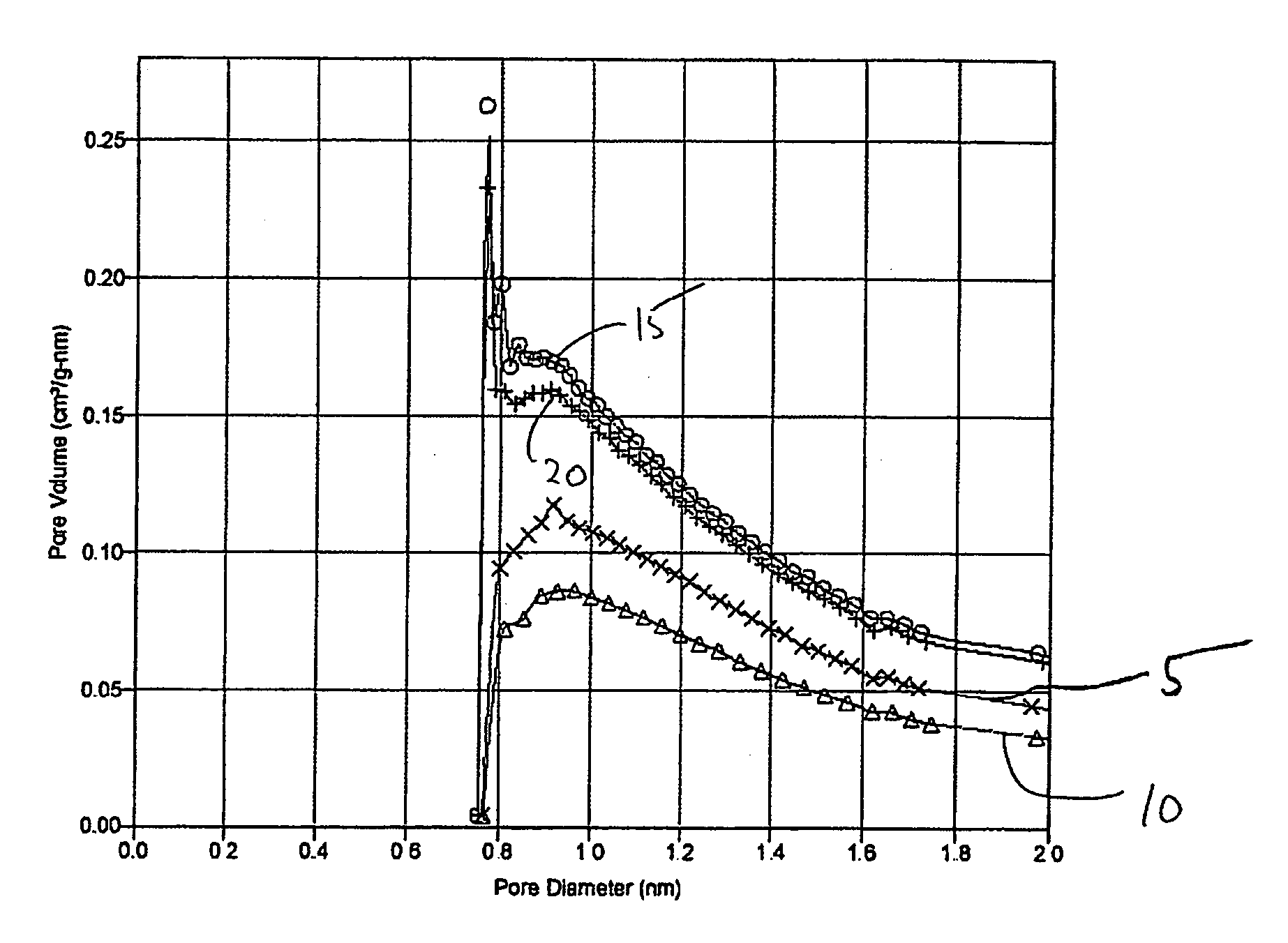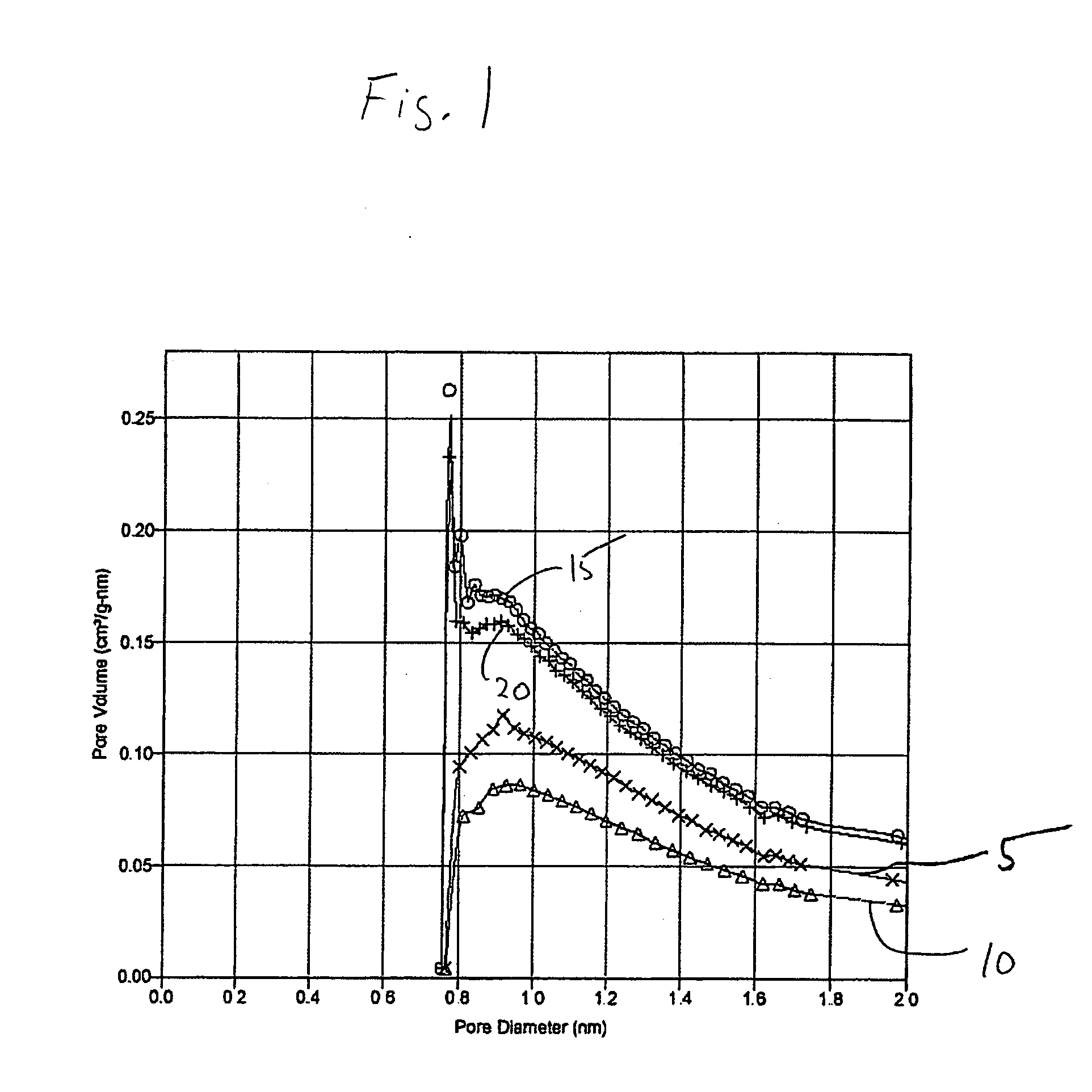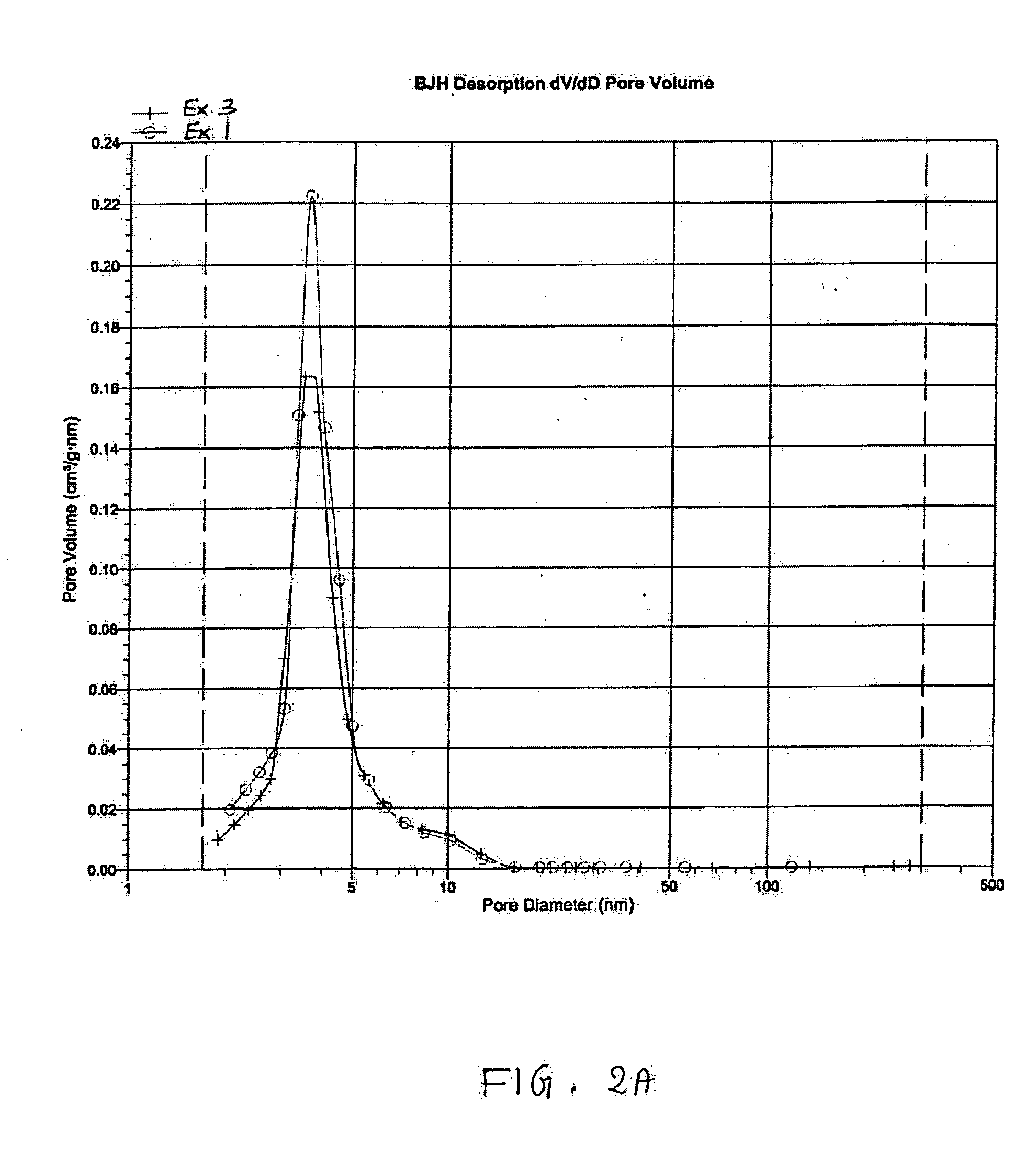Catalyst for hydroprocessing of Fischer-Tropsch products
a technology of hydroprocessing catalyst and fischertropsch products, which is applied in the direction of catalyst activation/preparation, physical/chemical process catalyst, metal/metal-oxide/metal-hydroxide catalyst, etc., can solve the problems of increasing the cost of natural gas, reducing the natural occurring source of crude oil used for liquid fuels such as gasoline and middle distillates, and presenting technological challenges
- Summary
- Abstract
- Description
- Claims
- Application Information
AI Technical Summary
Benefits of technology
Problems solved by technology
Method used
Image
Examples
example 1
Conventional Silica-Alumina Support
[0073] A silica-alumina support with a molar ratio of silica to alumina of 3:1 was prepared by co-precipitating sodium aluminate and sodium silicate (both from Aldrich) with the addition of diluted nitric acid. A hydrogel was obtained within 30 min, and the gelation pH was 10.5. The gel was then aged for three days at room temperature. Thereafter, ion exchange was performed with a 1.0 molar ammonium nitrate solution to convert it from the Na+ to H+ form. The hydrogel was washed with water to remove most of the ammonium nitrate. The gel was dried at 110° C. overnight and calcined in air at 550° C. for three hours. The resulting sample was then crushed and sieved to obtain particles of desired size (i.e., about 1.2 mm). The support had a BET surface area of 272 m2 / g, a pore volume of 0.40 ml / g, and an average pore diameter of 4.0 nm. The micropore analysis of this support Example 1 is shown in the FIG. 1 as curve 5. A BJH desorption of Example 1 sho...
example 2
Conventional Hydrocracking Catalyst
[0074] An incipient wetness impregnation of platinum was carried out by adding to the support of Example 1 a solution containing 0.2N hydrochloric acid in which the required amount of hydrogen hexachloroplatinate(IV) [H2PtCl6] was dissolved so as to achieve a platinum content of 0.5% Pt by weight of the total catalyst weight (after impregnation, drying and calcining). The catalyst was dried at 100° C. overnight and calcined at 500° C. for 3 hours.
example 3
Treatment of Support Example 1 with Silicic Acid
[0075] A sample of the support of Example 1 was impregnated with a two-step incipient wetness impregnation (also called pore volume impregnation) to add 4 wt. % silicic acid (with two applications of 2 wt. % silicic acid in water). The impregnated support was dried at 100° C. overnight after each impregnation and calcined at 500° C. for 3 hours. The micropore analysis of this support of Example 3 is shown in FIG. 1 as curve 10. A BJH desorption of Example 3 in FIG. 2A shows that the mean pore size of Example 3 (treated material) was about the same as for Example 1 (untreated material).
PUM
| Property | Measurement | Unit |
|---|---|---|
| Temperature | aaaaa | aaaaa |
| Temperature | aaaaa | aaaaa |
| Temperature | aaaaa | aaaaa |
Abstract
Description
Claims
Application Information
 Login to View More
Login to View More - R&D
- Intellectual Property
- Life Sciences
- Materials
- Tech Scout
- Unparalleled Data Quality
- Higher Quality Content
- 60% Fewer Hallucinations
Browse by: Latest US Patents, China's latest patents, Technical Efficacy Thesaurus, Application Domain, Technology Topic, Popular Technical Reports.
© 2025 PatSnap. All rights reserved.Legal|Privacy policy|Modern Slavery Act Transparency Statement|Sitemap|About US| Contact US: help@patsnap.com



